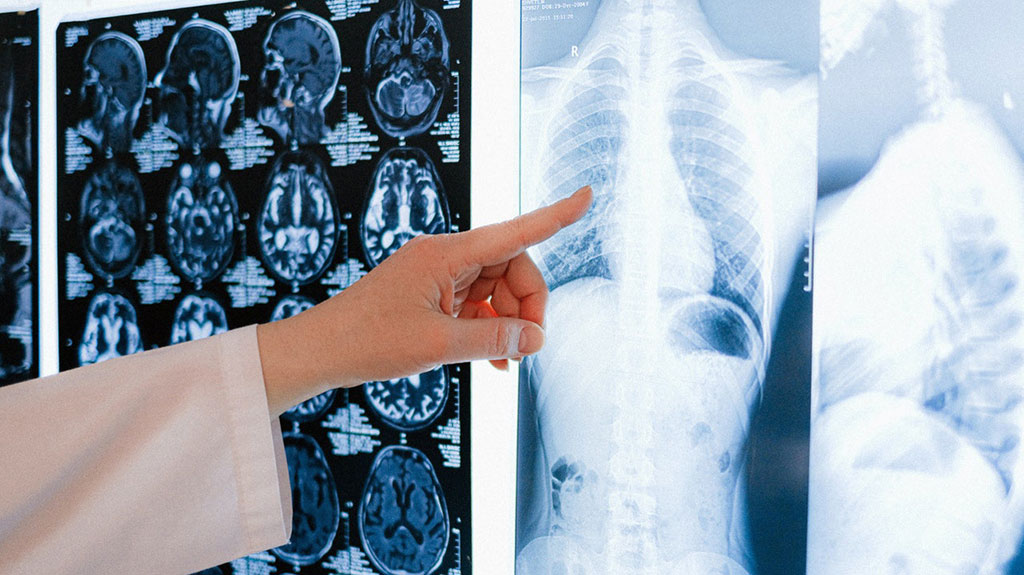Radiologists Accurately Differentiate Between COVID-19 and Other Atypical Pneumonias on Chest CT, Finds Study
Posted on 21 Oct 2021
Radiologists can differentiate COVID-19 from other atypical pneumonias on chest computed tomography (CT) but performed worse in the early and late CT stage of COVID 19 pneumonia, according to the findings of a new study.
The study was conducted by researchers at Heidelberg University Hospital (Heidelberg, Germany) to examine the performance of radiologists in differentiating COVID-19 from non-COVID-19 atypical pneumonia and to perform an analysis of CT patterns in a study cohort including viral, fungal and atypical bacterial pathogens.

Nucleic acid tests, most commonly via reverse transcription polymerase chain reaction (RT-PCR) assay, represent the standardized test for the detection of SARS-CoV-2 RNA from respiratory clinical specimens with a specificity reaching 100%. Besides RT-PCR, chest CT has turned out to be a helpful and fast tool in diagnosing COVID-19 pneumonia, with a moderate to high overall sensitivity of 75-88%. However, compared to the highly specific RT-PCR, the specificity of chest CT in diagnosing COVID-19 is lower, with a reported overall specificity of 46-80%. This can be explained by the fact that typical signs of COVID-19 pneumonia partially overlap with that of other acute and chronic pulmonary conditions. Some of the findings frequently encountered in COVID-19 pneumonia are: ground glass opacities (GGO), consolidation, crazy paving and enlargement of sub-segmental vessels (diameter greater than 3 mm) in areas of GGO.
The aim of this study was to investigate the diagnostic performance of radiologists with different level of experience in differentiating COVID-19 pneumonia from other atypical bacterial, fungal and viral pneumonias. Furthermore, the ability of radiologists to correctly classify infiltrates as COVID-19 pneumonia was tested for every one of the described CT stages of the disease. In addition, the study performed a detailed analysis of infiltrate patterns of all pneumonias included, aiming at identifying those atypical pneumonias most similar to COVID-19 pneumonia and defining imaging markers that might help distinguish COVID-19 pneumonia from its top differential diagnoses. Patients with positive RT-PCR tests for COVID-19 pneumonia and non-COVID-19 atypical pneumonia were retrospectively included. Five radiologists, blinded to the pathogen test results, assessed the CT scans and classified them as COVID-19 or non-COVID-19 pneumonia. For both groups specific CT features were recorded and a multivariate logistic regression model was used to calculate their ability to predict COVID-19 pneumonia.
The radiologists differentiated between COVID-19 and non-COVID-19 pneumonia with an overall accuracy, sensitivity, and specificity of 88%, 79%, and 90%, respectively. The percentage of correct ratings was lower in the early and late stage of COVID-19 pneumonia compared to the progressive and peak stage (68% and 71% vs. 85% and 89%). The variables associated with the most increased risk of COVID-19 pneumonia were band like subpleural opacities, vascular enlargement, and subpleural curvilinear lines. Bronchial wall thickening and centrilobular nodules were associated with decreased risk of COVID-19 pneumonia with OR of 0.30 and 0.10, respectively.
The study concluded that radiologists can differentiate between COVID-19 and non-COVID-19 atypical pneumonias at chest CT with high overall accuracy, although a lower performance was observed in the early and late stage of COVID 19 pneumonia. Specific CT features might help to make the correct diagnosis. The diagnostic accuracy of radiologists in this study was higher compared to earlier studies which the researchers have attributed to the continuous growing experience of radiologists with the imaging findings of COVID-19 pneumonia since the detection of SARS-CoV-2 in December 2019. The study was the first to examine the radiologists’ performance in relation to the stage of the COVID-19 pneumonia and the first to search for the atypical pneumonias most often misdiagnosed as COVID-19.
Related Links:
Heidelberg University Hospital








 Guided Devices.jpg)





